Will we send a spacecraft to take a closer look at the interstellar object 3I/ATLAS? On August 21, 2025, EarthSky’s Will Triggs interviewed astronomer Colin Snodgrass to find out.
Will we send a spacecraft to intercept 3I/ATLAS?
Scientists first spotted 3I/ATLAS, the 3rd interstellar visitor ever identified in our solar system, in early July 2025. And since then, one question has been asked countless times: will we send out a spacecraft to take a closer look? On August 21, EarthSky’s Will Triggs spoke to University of Edinburgh astronomer Colin Snodgrass to find out the answer. Plus, Colin talked about ESA’s Comet Interceptor, an upcoming spacecraft that will be primed to intercept future interstellar objects. Watch in the player above, or on YouTube.
3I/ATLAS shrinks again
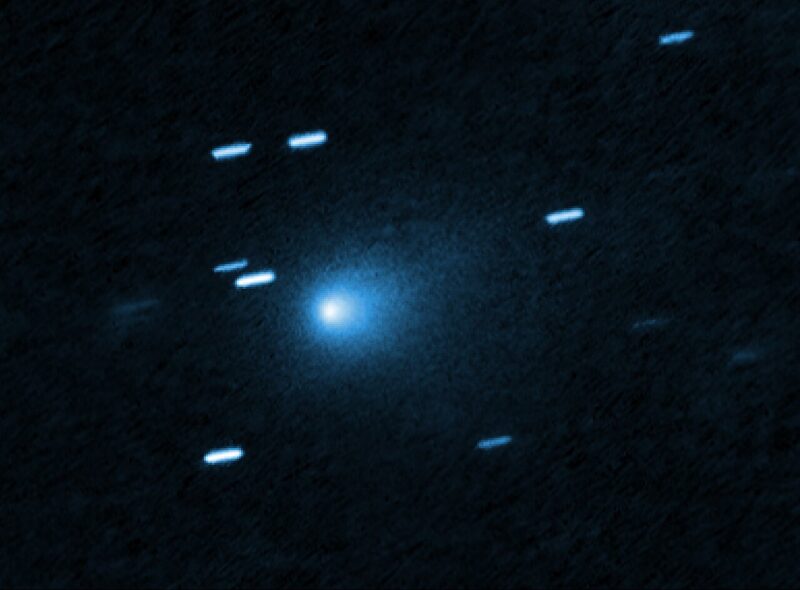
On August 7, 2025, NASA shared a new image of 3I/ATLAS (above) – the world’s 3rd known interstellar object – as well as provided an updated estimate of the size of the object’s nucleus, or core. Shortly after the object was first identified on July 1, 2025, 3I/ATLAS was estimated to have a diameter of about 20 km (12 miles). Then in late July – using data from the new Vera C. Rubin Observatory in Chile – the size estimate dropped to 10 km (6 miles). The latest analysis uses data from the NASA/ESA Hubble Space Telescope. It reduces the estimated diameter of 3I/ATLAS’s nucleus still further, to 5.6 km (3.5 miles).
And, the astronomers using Hubble data said, the object could be even smaller, as small as 320 meters (1,050 feet) across!
Plus, as you can see from the image, 3I/ ATLAS is looking more and more comet-like as it approaches our sun. It’s currently between the orbits of Mars and Jupiter.
The two previous known interstellar objects are 1I/ ‘Oumuamua and 2I/Borisov. ‘Oumuamua’s size is thought to be about 200 meters across at its widest (you’ll recall it has an elongated shape). And Borisov is thought to be less than a kilometer across.
The new Hubble data reveal even more about the comet. The NASA/ESA press release said:
Hubble also captured a dust plume ejected from the sun-warmed side of the comet, and the hint of a dust tail streaming away from the nucleus. Hubble’s data yields a dust-loss rate consistent with comets that are first detected around 480 million kilometers (300 million miles) from the sun. This behavior is much like the signature of previously seen sun-bound comets originating within our solar system.
3I/ATLAS is traveling through our solar system at roughly 210,000 kilometers per hour (130,000 mph), the highest velocity ever recorded for a solar system visitor. This breathtaking sprint is evidence that the comet has been drifting through interstellar space for many billions of years. The gravitational slingshot effect from innumerable stars and nebulae the comet passed added momentum, ratcheting up its speed. The longer 3I/ATLAS was out in space, the higher its speed grew.
What’s it made of?
ChatGPT told us:
Observations using various telescopes have confirmed that the comet contains abundant water ice, both in the form of solid grains and water vapor. Spectroscopic data from instruments like the Gemini South telescope and NASA’s Infrared Telescope Facility have detected water ice grains in the coma, while the Swift Observatory has observed water vapor and hydroxide ions. These findings indicate that 3I/ATLAS is an active comet with a significant icy composition.
Additionally, the comet’s dust composition is more similar to D-type asteroids, which are rich in organic compounds and silicates, suggesting a mixture of organics, silicates, carbonate minerals, and a significant amount of water ice. This combination of icy and rocky materials is characteristic of comets and supports the classification of 3I/ATLAS as an interstellar comet.
EarthSky interview with Colin Orion Chandler
3I/ ATLAS was estimated in early July to have a diameter of 20 km (12 miles). But astronomers using data from the new Vera C. Rubin Observatory re-estimated the size of 3I/ATLAS at around 10 km (6 miles) in late July. EarthSky interviewed one of the astronomers who helped refine 3I/ATLAS’s size estimate, Colin Orion Chandler of the DiRAC Institute of the University of Washington. Watch in the player above, or on YouTube.
EarthSky interview with Matthew Hopkins
3I/ATLAS – found on July 1 – is likely the oldest comet we’ve ever seen, according to University of Oxford astronomer Matthew Hopkins. It could be more than 7 billion years old, predating our solar system by more than 3 billion years! Hear him explain in the player above, or on YouTube.
Discovery of 3I/ ATLAS
The Asteroid Terrestrial-impact Last Alert System (ATLAS) detected our new visitor on July 1, 2025. And the Minor Planet Center confirmed its interstellar nature on July 2, 2025, naming it 3I/ATLAS (or C/2025 N1). The “3I” means it’s the 3rd interstellar visitor that we’ve found. Its trajectory and speed revealed it as an object not from our solar system, but from another star system.
The Hubble Space Telescope imaged the object on July 21, 2025. See the post from Bluesky below.
Hubble Space Telescope images of interstellar comet 3I/ATLAS are out! These were taken 5 hours ago. Plenty of cosmic rays peppering the images, but the comet's coma looks very nice and puffy. Best of luck to the researchers trying to write up papers for this… archive.stsci.edu/proposal_sea… ?
— astrafoxen (@astrafoxen.bsky.social) July 21, 2025 at 4:28 PM
From a different part of our galaxy
The object is traveling on a steep path through the Milky Way galaxy. Astronomers have analyzed its trajectory, which shows it is not swinging around the sun and heading back out into the outskirts of our solar system. Instead it’s just flying by. And their analysis suggests Comet 3I/ATLAS originated within, or at least on the border of, the Milky Way’s thick disk. This is an area of ancient stars orbiting above and below the thin galactic plane where our sun resides.

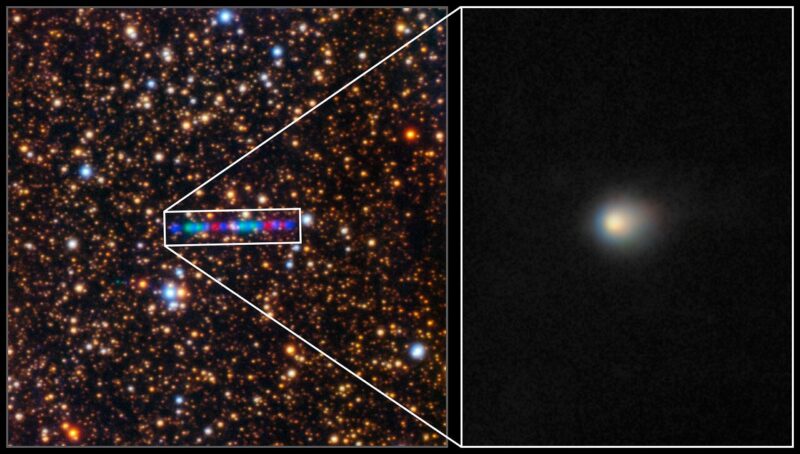
What we know about Comet 3I/ATLAS
Our new visitor will get its closest to the sun – at about 2 astronomical units (AU), or twice as far as Earth is from the sun – in October. As it reaches perihelion – its closest point to the sun – it will be traveling at almost 15,500 miles (25,000 kilometers) per hour.
The speedy nature of Comet 3I/ATLAS is more proof of its interstellar nature. It has to be moving at a blistering pace in order to escape the sun’s gravitational pull.
Marshall Eubanks, a physicist and VLBI radio astronomer and co-founder of Space Initiatives, said the comet will come within about 0.4 AU of Mars in October. That would make it just barely observable by the Mars Reconnaissance Orbiter.

It’s important for science
Having a visitor from another solar system is a rare opportunity for scientists, as NOIRLab said in a press release:
These visitors from faraway regions of the cosmos are valuable objects to study since they offer a tangible connection to other star systems. They carry information about the chemical elements that were present when and where they formed, which gives scientists insight into how planetary systems form at distant stars throughout our galaxy’s history, including stars that have since died out.

Observing the new interstellar object
From now through the beginning of September, Comet 3I/ATLAS will be in the evening sky. For the rest of September and October it will be too close to the sun to see. But by November and December the comet will be bright after just passing the sun and also out of the sun’s glare. At this point it will be a morning object, not far from Venus.
Eddie Irizarry shared maps of the location of 3I/ATLAS. Eddie said in an email to EarthSky:
Although Comet 3I/Atlas is currently dim, advanced amateur observers might be able to photograph the new visitor by taking long exposure images through a telescope.
By August, the new comet should reach magnitude 16 and gradually improve, allowing more astrophotographers to capture this rare object.
The dim space rock is currently at about magnitude 16.9.
Following are star charts for those who want to search for the comet using a telescope or do astrophotography by capturing the comet close to a star or deep-sky object.
Evening star charts here
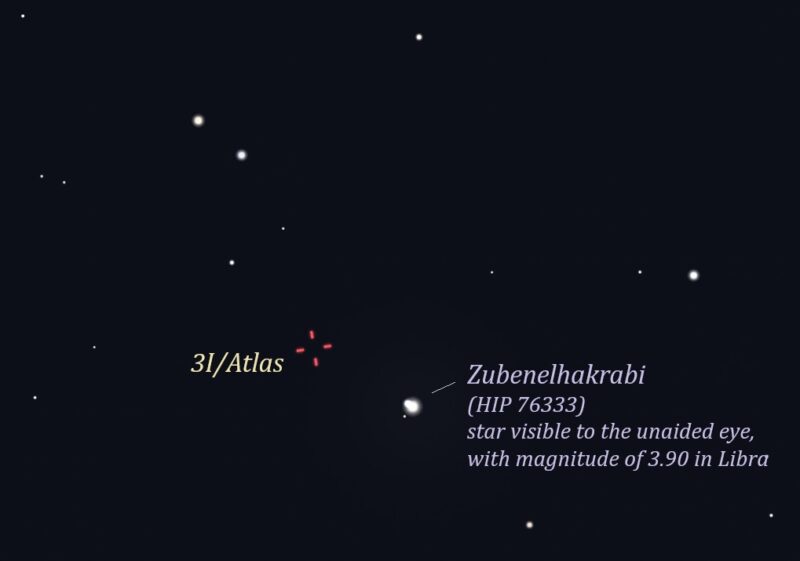
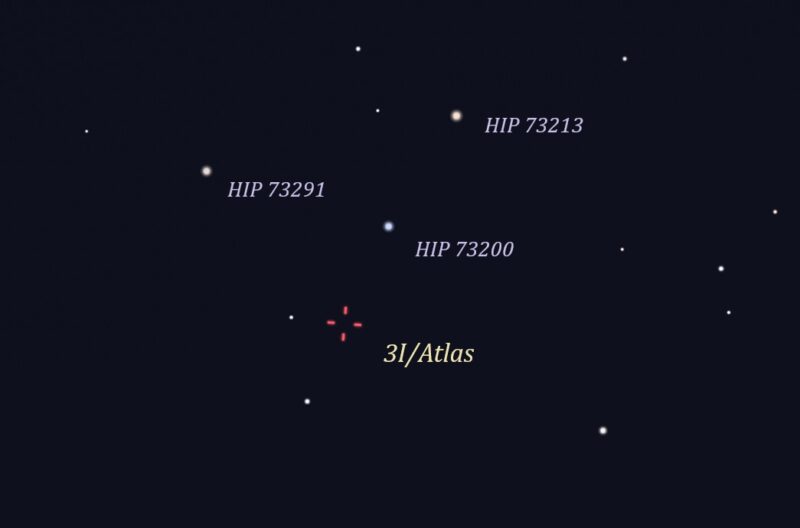
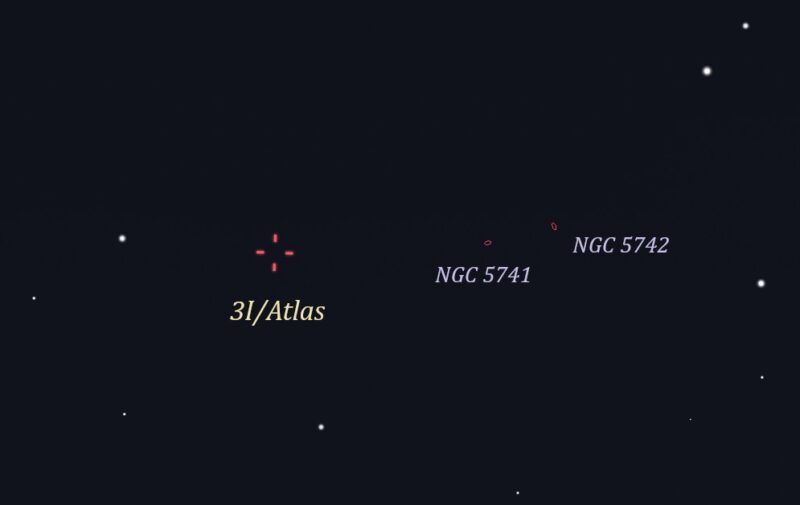
Morning star charts here
After Comet 3I/ATLAS makes its close approach to the sun, you can find it in the morning sky.
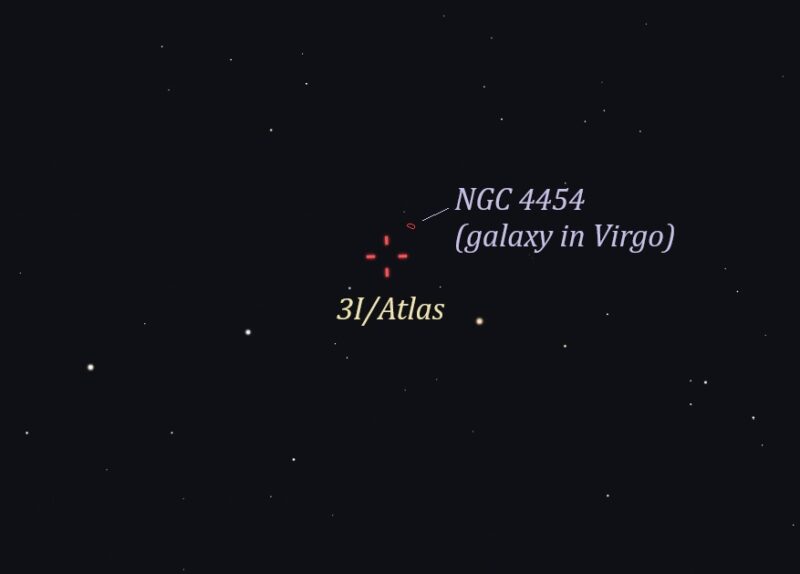
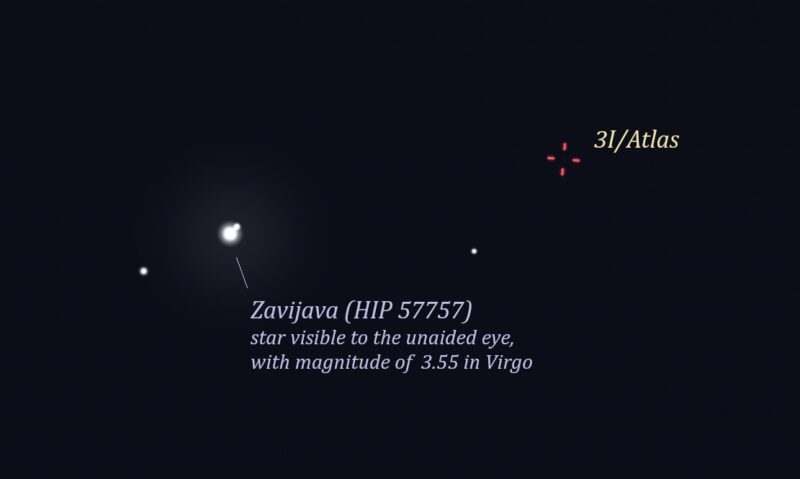
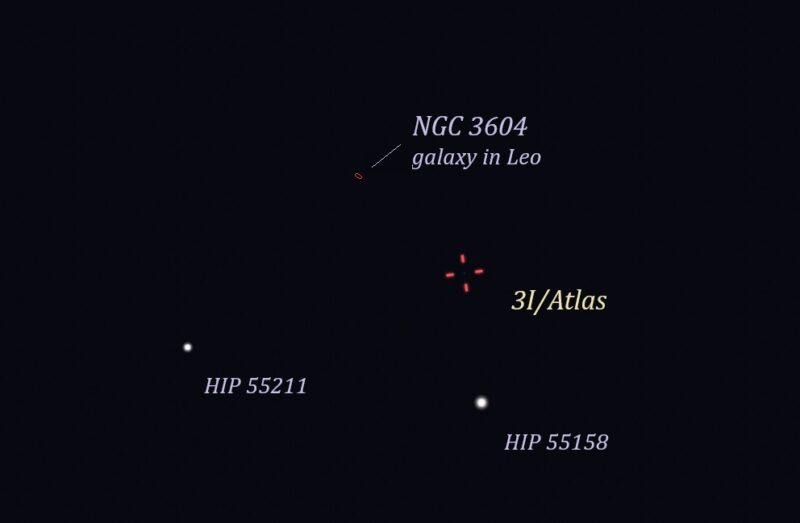
Bottom line: The new interstellar visitor – 3I/ATLAS – is looking more comet-like in new Hubble Space Telescope observations. It’s estimated to be 5.6 km across. But it could be as small as 320 meters.











